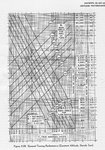Hop,
Stop trying to put words into my mouth, I never claimed the slats increase lift at any given AoA, however as the critical AoA is reached (Which it is emmidiately in a tight turn) they deploy, increasing the critical AoA and thereby lift.
No, you claimed they increased lift AND Aoa:
The slats increases the lift by 25% in the covered areas, and the critical AoA of the entire wing is increased as-well, allowing for a much tighter turn.
The Bf-109 has 48% of its wings covered by the slats, which means roughly a 12.5% increase in lift and still a 25% increase in available AoA.
You can say "slats increase lift", which is correct although greatly simplified. You can say "increased AoA increases lift" which is more accurate. But when you say "slats increase lift and AoA" you are wrong, because the slats increase critical AoA, and the AoA increases lift.
Now sure when the Bf-109 turns at its tightest, tighter than the Spitfire, its going to create more drag, thats logical - The tighter the turn, the more the drag. Drag is a biproduct of lift.
Again, no. The 109 has to pull a higher CL to equal the Spitfire's turn, because it has a much higher wing loading. That means at the same turn as the Spitfire, the 109 is generating more induced drag.
And as to your claim that the slats don't increase lift, well thats total bullsh*t Hop. The slats delay the onset of stall by increasing the critical AoA, and the higher the AoA the higher the lift
Which is exactly what I said. The slats do not increase lift at a given AoA (unless that AoA is at the limit of critical AoA)
And as to the increase in drag, well fortunately the 109 is very small and has a very low power-loading, so although the 109 suffers from more drag pr. area in a tight turn, tighter than the Spitfire, it makes up for that in power and small size.
Which doesn't seem to be supported by any tests I have seen.
Also your "big wing" theory is so very flawed. A big wing does not simply create less induced drag than a smaller one.
Yes, it does. The bigger the wing (at a given weight, ie the lower the wingloading) the lower the induced drag, because induced drag is proportional to the square of CL. Basically, a smaller wing has to pull a higher AoA to generate the same lift as a larger one, which means higher induced drag.
Oh and about the Russian tests Hop, you forgot to mention that the 109G-2 was equipped with gun-pods.
I think that the first weight is with gunpods, the second without. That should be fairly obvious from the two quoted weights.


